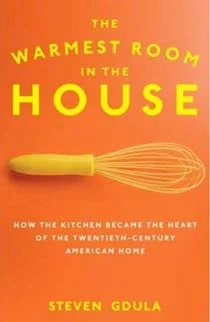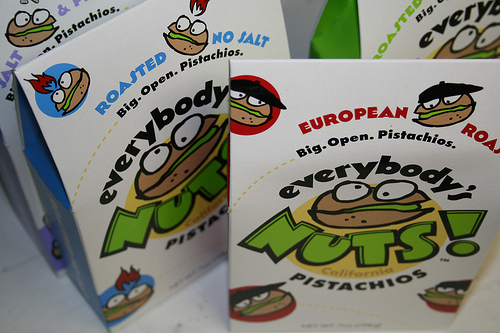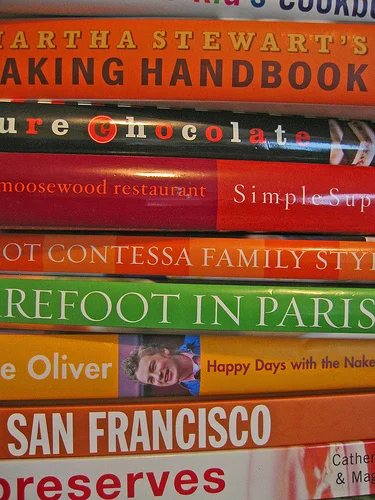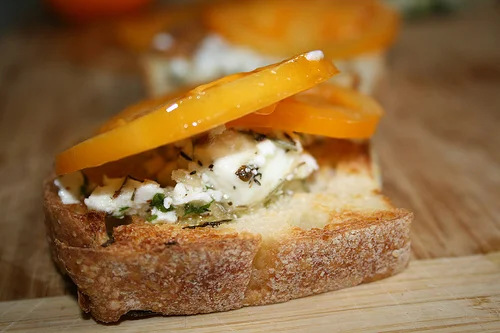The Warmest Room in the House
I am so glad I picked this book up from Half Price Books. History is overwhelming to me, linear yet layered and staggeringly complex. So many industries and policies and philosophies and religions to track. So many trends and movements, inventions and circumstance. This book may seem simple to some, but for me it provided an easy-to-digest overview of America, one decade at a time. And it wasn't your basic history book. You won't find this in U.S. History class---not even close.
It is history presented through the refrigerator, via the novelty of pop-tarts and saran wrap, with political influence and an evolution of diets. It is where Tupperware meets the road; where the avocado fridge of the 60's morphed into the chrome lined counters of the 80's, and why processed food---and bioengineering---became king. [In many ways this book is all over the place, pulling in seemingly random bits of information, mixing fact with opinion and offering strands of history that seem to halt rather than continue. It is no an easy task to summarize America into decades via the kitchen; The NY Times review of this book offers a more critical review. For me, I actually liked the pile of facts. It helped me sort some of the history swimming around in my own brain].
This history was my kind of history, one that included some pots and pans, and could be read with a glass of wine in hand (or a Diet Coke with NutraSweet). It was nice to read a slotted progression of events, to see how historical calamities and triumphs applied their force to the look of---and cook in---the kitchen. Here is an appropriately random, yet decade appropriate, pile of information from this book:
1900-1910: Electricity & telephones, indoor faucets, hoosiers, free-standing stoves, the Fannie Farmer Cookbook. The domestic-science movement, Good Housekeeping stressed precise measurements (think teaspoons instead of dollops). The Pure Food Act passed in 1906 (Roosevelt): ingredients listed on products. Typhoid Mary resulted in focus on sanitation.
1910-1919: World War 1; sacrifice in the kitchens directly linked to provisioning the troops. War Gardens were grown. Victory Bread. Preserving, drying and canning foods was patriotic. Casseroles, crock pots and Pyrex.
1920-1929: Sliced bread and toasters. The Prohibition ushered in the soda pop craze. Food production 'advancements' included chemical pesticides; candy was dandy; breakfast cereal reigned as did Betty Crocker. Italian, Chinese and Spanish foods entered American kitchens.
1930-1939: The stock market crash of October 1929 ushered in the Depression; enter breadlines, soup kitchens and one-pot meals. President Roosevelt: the New Deal, Emergency Farm Act, WPA. The backyard chicken farmer. Campbell's soup, Kraft macaroni and cheese, SPAM. Wheeled shopping carts, gable-topped milk cartons, the fork lift and Route 66 (Chicago to LA) aided food distribution. Fiestaware was trendy, as was The Joy of Cooking, the Waring blender, the dishwasher and garbage disposal.
1940-1949: Television. World War II: rationing, preservation, packaging & processing of foods. Margarine appeared when butter was rationed. Folks planted Victory Gardens. A new focus on vitamins & minerals: the National Food and Nutrition Board released the Basic Seven wheel. Foods touted 'enriched,' 'fortified,' and 'whole-grain.' Black tea, Minute Made orange juice, the microwave, Reynold's foil and Teflon made appearances. Famous author M.F.K. Fisher wrote How to Cook a Wolf.
1950-1959: Built-in long cabinets, chrome-edged counters, french fries and collapsible TV trays. Ready-to-eat, pre-packaged meals. Tang, decaffeinated coffee, grilled cheese sandwiches, and frozen dinners. Suburbs swelled, outdoor grills became norm; then came Tupperware, saran wrap and vinyl floors. James Beard got his own cooking school. Fast food boomed: McDonald's franchises exploded, and Burger King was born. Low-cal was vogue; Sweet N' Low introduced and Cheez Whiz typical. International cuisines exploded, Pillsbury hosted bake-offs.
1960-1969: J.F.K. and the civil rights movement. Martin Luther King. Julie Childs offered a Do It Yourself attitude for French Cuisine. Thin was in, as was the Barbie Doll and Weight Watchers. Enter TV shows like the Flinstones and Jetsons. Organic gardening lost to chemical advances (science/technology promised control re: food supply); note the rise of the Freedom from Hunger foundation . The Beatles appeared at the same time as fondue, diet sodas, vegetarianism and health-food. Non-food food, or man-made foods answered the fears of living in a world of limited resources: Cool-whip, Coffee-Mate, Crisco and... petrochemicals? Latin food and soul food took the stage.
1970-1979: Salads, organic foods, Alice Waters. President Nixon. Obesity became a national concern. Latch-key kids and pre-packaged foods were the norm; Hamburger Helper made its debut. Food banks spread, inflation grew and an OPEC (oil) embargo meant higher food prices in America. The Cuisinart, the Crock-Pot and 'foodies' became familiar terms. Warm earth-tones and wood grain cabinets entered the kitchen, as did television shows like the Brady Bunch and Little House on the Prairie. Earth Day accompanied a quickly growing environmental movement. Quaker oats and Grape-nuts became stalwarts. Whole Foods Market and Moosewood Restaurant found their place in history, as did the Scarsdale, Pritikin and Atkins diets. Chinatown(s), Little Italy(ies), the Godfather became American mainstays.
1980-1989: Fitness and Nautilus machines were popular, as were Richard Simmons & Jane Fonda. Cajun and Creole cuisines were the rage. The 80's boasted shows like Roseanne [and her cluttered kitchen], The Cosby Show and the quickly rising star, Martha Stewart. It was the time of President Reagan. Low-fat, NutraSweet and Lean Cuisine reflected this decade's fat free, skim and light mantras. Tofutti? Oh, and SUPER SIZE meals. And health clubs. Americans started eating less beef, and adding poultry and fish to their diets---enter Chicken Helper and Charlie the Tuna. Sugar prices soared, corn was cheap and plentiful: and high fructose corn syrup became the sweetener of choice. Obesity rose. Thai, Mexican, Vietnamese and Japanese SUSHI went mainstream. Starbucks was instrumental. Home espresso machines were purchased by many. The stock market crashed in 1987.
1990-1999: The decade started with a recession and 1 of 10 Americans using food stamps. TV boasted the likes of Seinfeld, Frasier and Friends. Susan Powter wrote 'Stop the Insanity,' and became a forerunner of tackling obesity. Online grocery shopping actualized; e-commerce grew and the the Viking Stove was available for purchase. Taste of Home magazine looked backwards for practical comfort foods. Microbrews and cocktails became the beverage of choice. New millennium jitters were a palpable undercurrent: remember the Millennium Bug? The Food Pyramid made its debut. Then came bio engineered: Insect-Resistant Corn (gene splicing) and the Flavr Savr Tomato. The United States Personal Chef Association (1991) was born. The Food Network was full-time, 24 hours a day, and successful. Dining-out habits exploded. Atkins returned. You could watch 'In Julia's Kitchen with Master Chefs.'
2000 & Beyond: Rachel Ray, Bobby Flay, Giada, Barefoot Contessa, Jamie Oliver, Anthony Bourdain, etc. TV shows: The next Food Network Star, Top Chef, Iron Chef. Online you can find Allrecipes.com, Chowhound.com, FoodandWine. com, Delish.com, Foodbuzz.com, etc. Enter FOOD BLOGGING. Consider reality TV, YouTube, Google. And a returned emphasis on farmer's markets, seasonal cooking, local foods, organic and pure foods. COPIA was created.
It may be a lot to stomach. But the culinary history started, evolved and is now booming. It is growing exponentially and with technology in place is exciting to say the least. It will be interesting to see where food---and chefs---will take us just 10 years from today.
I am enjoying a few culinary reads, as you may have noticed. They have been my self-imposed homework over the summer, since I have much to learn about the culinary giants, the history of the kitchen, and the evolution of cuisine. That, and 'modern day' trends/television: I continue to watch Top Chef, the Next Food Network Star and Iron Chef. But school is starting soon, not just for my boys, but myself as well. I look forward to learning how to cook stocks and make French sauces, and to continue developing my own little history, one decade at a time.







